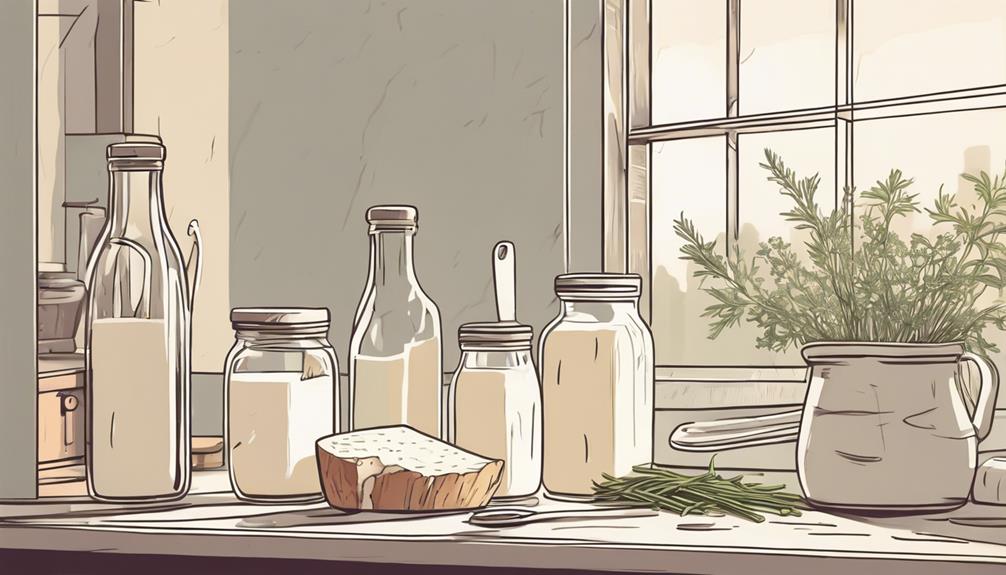See All: Cheese Making
Watch How To Do This Here…
YES! You can make cheese at home. Take our FREE 4-Part video training series to simplify cheesemaking for everyone. No waste. No overwhelm. No missing steps. You can make delicious, healthy cheese, even if you only have access to grocery store milk and regular kitchen equipment…
Click Here To Watch Step By Step Now
“Hey there! I’ve just started getting into cheese making and I’m really excited about it. However, I’m a bit confused about sourcing high-quality milk for the process. What particular signs should I look for to ensure that the milk I’m using is of top quality for cheese making? I don’t want to mess things up at the beginning itself. I’m based in Melbourne, Australia. Thanks a bunch!” Cheers, Joseph, Melbourne, Australia.
Hey Joseph! That’s a fantastic question and welcome to the wonderful world of cheese making. Choosing high-quality milk is one of the most important steps in ensuring your cheese turns out great. Let’s break down what you need to look for when sourcing milk for your cheese-making adventures.
Quality Indicators in Milk for Cheese Making
Freshness
First and foremost, fresh milk is key. Fresh milk is rich in nutrients and enzymes that are crucial for the cheese-making process. Here are a few indicators:
- Smell: Fresh milk will have a clean, slightly sweet smell. Any off odors can indicate bacterial contamination or spoilage.
- Appearance: It should be bright white or cream in color without any signs of separation or clumping.
- Taste: Although not always feasible, tasting the milk can give you a good idea of its freshness. Fresh milk tastes clean and mildly sweet.
Source
Knowing the source of the milk can significantly impact the quality. Consider the following:
- Locale: Local dairies often provide the freshest options and you can actually visit the farm to see their practices.
- Animal Health: Milk from healthy animals tends to be of higher quality. Look for dairies that ensure proper animal welfare.
- Diet: The diet of the cows, goats, or sheep impacts the milk’s flavor and quality. Grass-fed animals typically produce better milk.
Fat and Protein Content
The fat and protein content in milk has a direct impact on the texture and flavor of your cheese. Here’s what to consider:
- Fat Content: Higher fat content usually results in richer, creamier cheeses. Whole milk is typically preferred over skim milk.
- Protein Content: Adequate protein levels are necessary for proper curd formation. Consistent and high protein levels can lead to better cheese yield and structure.
Raw vs Pasteurized Milk
The choice between raw and pasteurized milk is a big one, Joseph. Each has its pros and cons:
- Raw Milk: This hasn’t been heat-treated and retains all natural enzymes and bacteria, which can enhance the cheese’s flavor and texture. However, it needs to be handled with extreme care to avoid contamination.
- Pasteurized Milk: This milk has been heat-treated to kill harmful bacteria. While safer, the process can sometimes reduce the depth of flavor and enzymatic activity.
Homogenization
Homogenized milk has its fat molecules broken down so they stay integrated into the liquid. Non-homogenized milk tends to be better for cheese making:
- Non-Homogenized Milk: Allows for a creamier texture and better curd formation.
- Homogenized Milk: Can be used but may require added calcium chloride to assist with curd formation.
Microbial Quality
Ensuring the milk is free of harmful bacteria is essential for producing safe and tasty cheese. Look for:
- Low Somatic Cell Counts (SCC): A lower SCC generally means the milk is coming from healthier animals and is of higher quality.
- Minimal Antibiotics: Ensure the milk doesn’t contain antibiotic residues, which can interfere with the bacterial cultures used in cheese making.
Testing Milk Quality
Testing the quality of the milk is a proactive way to ensure you’re using the best possible product. Here are some tests you or your supplier can conduct:
pH Level
A proper pH level of around 6.5 to 6.7 is ideal. Too low or high can affect bacterial growth and curd setting.
Acidity
Proper titration tests can measure the acidity of the milk, with most cheese making requiring a balanced acidic profile for optimal curd formation.
Practical Tips for Joseph in Melbourne
Given you’re in Melbourne, here are some specific suggestions:
- Look for local farmers’ markets or farm co-ops where fresh, high-quality milk is sold.
- Visit local dairy farms to get a firsthand look at their practices and the condition of their animals.
- Consider joining cheese-making clubs or communities in Melbourne. Networking is a great way to find trusted sources of high-quality milk.
Joseph, I hope this clears up some of your confusion and points you in the right direction. Make sure to use these guidelines to find the best possible milk, and your cheese-making sessions should be a success!
Final Thoughts…
To sum it up, Joseph, the key signs of high-quality milk for cheese making include freshness, knowing the source, appropriate fat and protein content, your choice between raw and pasteurized, non-homogenization, and excellent microbial quality. Keep these points in mind, and you’ll be well on your way to crafting some fantastic cheese. Thanks for reaching out, happy cheese making!
Return To: Cheese Making
Free Step By Step Cheese Making Videos…
YES! You can make cheese at home. Take our FREE 4-Part video training series to simplify cheesemaking for everyone. No waste. No overwhelm. No missing steps. You can make delicious, healthy cheese, even if you only have access to grocery store milk and regular kitchen equipment…

